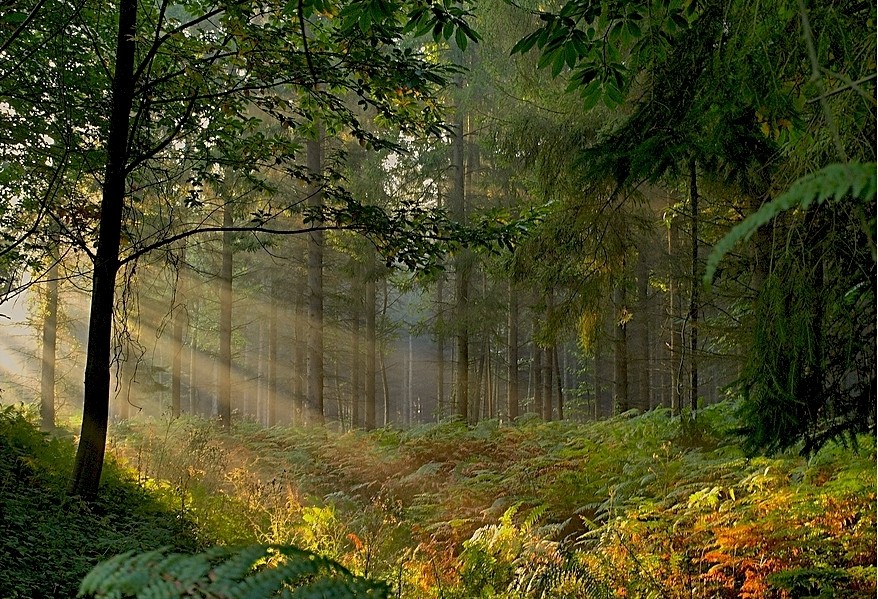It’s easy to understand why it was so hard for the Romans, and then the French, to conquer Brittany. The land resembles, as I said yesterday, the Ozarks or West Virginia in its basic surface structure. Brittany shares the same North Atlantic winds and currents that turn England into a soggy mess. There are creeks everywhere. Every tree and rock is slimy with moss. The ground cover is thick. There are climbing vines clinging to every deciduous tree. Except where the ground is level, it’s slippery footing — and it’s seldom level. This forest contains an amazing variety of trees. Calling it “mixed forest” is an understatement. Oaks are everywhere, and so are an odd-looking silver birch. There are also spruce and the occasional pine. One large stand of spruce I passed through was particularly creepy, a confusing maze of mist and shadows. Everything about this forest makes for slow going, and the undergrowth quickly swallow up any footpath that isn’t constantly used.
That was the case of the trail I followed in search of a little-known cluster of Neolithic menhirs. I started out on a clearly marked trail, but before long I was in trouble. The trail turned faint, then vague, then vanished altogether. Proceeding by dead reckoning was difficult. With alternatively clear and cloudy skies, and the dense cover breaking up the light, there was little help to be gotten from the sun. Fortunately, there was an ancient wall buried in the forest. It was no different from the hundreds of walls I had seen forming field boundaries on farms, except that it was nowhere near any fields and it had four-hundred year old oaks growing on it. Whatever farm it formerly demarked had vanished long ago. Nevertheless, it served well as a fixed line to orient me. In the end, I found what I was looking for.
Morbihan has thousands of menhirs and other megalithic structures. Scattered ones, like this minor cluster, which obviously attracted little interest from anyone, as well as the vast alignments of standing stones at Carnac, 50km to the south.
As I stumbled through this leafy labyrinth, I imagined what it must have been like for some grumbling Roman soldier trying to make his way through this stuff in pursuit of native Celts who were not too keen on the blessings of Roman Civilization. Slippery traction, constant rain, and a potential angry woad-painted Celt behind every tree. This was classic territory for guerrilla resistance. In fact, the Romans only defeated the local tribe, the Veneti, when they got lucky in a naval battle. The Veneti had better ships and were better sailors. But the Romans caught them off guard and destroyed their fleet in the Gulf of Morbihan. Then, petulant as always, they captured all the land forts and then slaughtered almost the entire population, save for the few who made it into the hills. Other, more docile peasants from Roman Gaul were imported to replace them.
All of which calls to mind another hilly countryside I once knew well, long ago, and another slaughter of innocents. But I’m due to attend an evening of traditional Breton dance and music, so I’ll get to that later.


0 Comments.